SRRC Certification in China
Comprehensive Guide to Compliance and Approval
Ensure Market Access in China with SRRC Certification

Understanding SRRC Certification
The SRRC (State Radio Regulatory Commission) certification is a mandatory regulatory requirement in China for all radio transmission equipment. This certification ensures that radio devices comply with the Chinese regulations regarding the use of the radio frequency spectrum. The State Radio Monitoring and Testing Center (SRTC) is the designated authority responsible for issuing SRRC certificates.
The SRRC is a crucial approval for manufacturers and exporters who wish to sell radio equipment, such as wireless communication devices, in the Chinese market.
Devices that are solely intended for receiving signals, without transmitting capabilities, are exempt from SRRC certification requirements. For example, GPS receivers or radio scanners that only receive signals are generally exempt. However, it is important to verify whether additional local regulations or standards might still apply.
Products Requiring SRRC Certification
SRRC certification is required for a wide range of products that use radio frequency (RF) technology, including but not limited to:
Mobile Phones: Devices that operate on GSM, CDMA, LTE, 5G, or other cellular networks.
Bluetooth Devices: Wireless headsets, speakers, wearables, and other devices using Bluetooth technology.
Wi-Fi Enabled Devices: Wireless routers, laptops, tablets, and smart home devices that connect via Wi-Fi.
RFID Devices: Radio Frequency Identification products used in logistics, access control, and other applications.
IoT Devices: Internet of Things devices that communicate wirelessly over various frequency bands.
Satellite Communication Equipment: Devices that communicate with satellites for GPS or data transmission.
Drones: Unmanned aerial vehicles (UAVs) that use RF for remote control and data transmission.
The SRRC certification is specific to the frequency bands that a device will use within China. Different products may be certified for different frequency ranges depending on their intended use (e.g., Wi-Fi, Bluetooth, cellular networks, etc.).
SRRC Certification Process
The SRRC certification process involves several key steps:
Pre-Application Review: Before submitting an official application, a preliminary review of the product’s specifications is conducted to ensure it falls under SRRC’s jurisdiction.
Application Submission: The manufacturer or their authorized representative must submit an application to the State Radio Monitoring and Testing Center (SRTC), including detailed technical documentation about the product.
Product Testing: The product undergoes rigorous testing at an accredited laboratory in China. The tests evaluate the device’s radio frequency emissions, bandwidth, power levels, and compliance with China’s national standards (GB standards).
Technical Review: Following testing, a technical review is conducted to ensure the product meets all necessary requirements.
Certification Issuance: If the product passes all tests and reviews, the SRRC issues the certification, allowing the product to be legally sold and used in China.
Labeling Requirements: Certified products must display the SRRC certification number on the product itself or its packaging. This label indicates that the product complies with Chinese regulations and has been approved for sale in the market.
SRCC Labelling
The new SRRC labeling system, effective from December 1, 2023, introduces a more structured and detailed format for the CMIIT ID, which is used to mark products that have obtained SRRC certification in China. Here’s a breakdown of the new SRRC code format and the associated guidelines:
CMIIT ID Format
The CMIIT ID for SRRC certification is now structured as a 12-digit code:
- AA (Year Code): Represents the year in which the application was submitted. For example, “24” would denote the year 2024.
- B (Equipment Code): A single capital letter representing the type of equipment.
- CC (Territorial Code): A two-digit code indicating the place of manufacture.
- DDD (Enterprise Code): A three-digit code assigned to the enterprise, which must include at least one digit.
- EEEE (Autonomous Code): A four-character code, where the first character can be a capital letter or number, and the last three must be digits.
Example CMIIT ID:
In this example:
- 24: Represents the year 2024.
- A: Indicates the equipment type.
- 12: Is the territorial code.
- B00: Is the enterprise code.
- 1234: Is the autonomous code.
Guidelines for SRRC Code Compilation:
Compliance: The code must adhere to radio management laws and regulations and should not cause any confusion or violate public order.
Autonomous Code Management: The applicant is responsible for generating and managing the autonomous part of the code. It is crucial to avoid duplications or errors when submitting the code with the SRRC application.
Consistency: The year code reflects the year when the application was submitted, regardless of when the certification is issued.
System-Generated Codes: If an applicant opts not to compile their own SRRC code, the system will generate one automatically.
Effective Date: The SRRC code can be assigned when the application is submitted, but it only becomes effective after the SRRC certificate is issued. Only then can the product be legally produced and sold.
MIIT Label
Products that have obtained SRRC certification must be marked with a MIIT label that clearly displays the CMIIT ID. This label serves as proof that the product complies with Chinese radio frequency regulations and has been certified by the State Radio Regulatory Commission.
Example MIIT Label:
This label should be placed on the product or its packaging in a visible location to ensure compliance with Chinese regulations. Proper labeling is mandatory for the legal sale and distribution of radio transmission devices in China.
Related Services
Click here to know about the Approval Process for the Canadian Market
Click here to know about the SRCC certifications
Click here to know everything about Type Approval for Fiji
Click here to know everything about Type Approval for Hong Kong
Click here to know everything about India Approvals
Click here to know everything about PSE Mark
Click here to know everything about MIC Certificate
Click here to know everything about Type Approval for Malaysia
Click here to know everything about Type Approval for Russia
Click here to know everything about Type Approval for Saudi Arabia
Click here to know everything about Type Approval for South Africa
Click here to know everything about Type Approval for Singapore
Click here to know everything about Type Approval for South America
Click here to know everything about Type Approval for South Korea
Click here to know everything about NCC Certificate
Click here to know everything about BSMI Mark
Click here to know everything about Type Approval for USA
Company Strengths at a glance
Why C-PRAV?
Navigating SRCC certification in China can be challenging due to the country’s strict radio compliance standards and complex regulatory processes. That’s where C-PRAV steps in. With proven expertise and local partnerships, we make the SRCC certification process straightforward and efficient, so you can confidently enter the Chinese market.
Comprehensive Support
We simplify the certification journey by managing the end-to-end process, including technical documentation, RF testing, and application submission. C-PRAV’s structured approach helps prevent common pitfalls and ensures documentation meets SRCC standards.
Global Experience with Local Knowledge
C-PRAV combines global expertise in radio and telecommunications standards with an understanding of China’s unique regulatory requirements. This dual perspective allows us to tailor our services to meet both international and SRCC-specific compliance needs.
Cost-Effective Solutions
We understand the importance of tailored solutions. We recognize that every product is unique, which is why we specialize in customizing compliance strategies to perfectly align with your specific needs and budget.
We Have Great Answers
Ask Us Anything
Yes, SRCC certification is mandatory for devices with radio transmission functionality, including Wi-Fi, Bluetooth, and cellular-enabled products.
SRCC certification is frequency-specific. Devices must be tested and certified for each frequency they operate within in China.
No, SRCC requires testing within China. Overseas test reports are not accepted for certification purposes.
No, For SRCC local rep is not required.
Generally , between 3- 5 years
Yes, in-country testing at an accredited Chinese lab is usually required to ensure the product complies with SRCC standards and regulations
Yes, Labelling requirements are there
No, SRCC certification is model-specific. Each unique model requires its own certification.
Regulatory Updates for China
Release of GB 26572-2025: New Mandatory Standard on Hazardous Substances in Electrical and Electronic Products
On August 22, 2025, China officially released the updated mandatory national standard GB 26572-2025 – Requirements for the Restriction of the Use of Hazardous Substances in Electrical and Electronic Products on the National Standard Information Public Service Platform. On the same day, the Ministry of Industry and Information Technology held a press conference to provide a detailed briefing on the standard. Effective Date and Transition PeriodThe standard will come
China Issues New CCC Implementation Rules for Lithium Batteries and Power Banks
The National Certification and Accreditation Administration (CNCA) has released the Trial Implementation Rules for Compulsory Product Certification of Mobile Power Supplies, Lithium-Ion Batteries, and Battery Packs under document number CNCA-C09-02:2025. These new rules will take effect on August 15, 2025, and will replace the corresponding provisions previously outlined in CNCA-C09-01:2023 for the applicable product categories. Scope of Application The updated certification rules apply to the following product categories: Mobile
China to Phase Out Regulatory Support for 40–50 GHz Wireless Access Systems
China’s Ministry of Industry and Information Technology (MIIT) has officially announced the cancellation of two regulatory documents governing the 40–50 GHz frequency band. This move is part of China’s broader strategy to streamline spectrum management and enhance the efficiency of radio frequency utilization. Scope of WithdrawalThe cancellation affects the following two guidelines, both originally released in 2013: Technical Rules for Point-to-Point Wireless Access in Fixed Services within the
Release of GB 26572-2025: New Mandatory Standard on Hazardous Substances in Electrical and Electronic Products
On August 22, 2025, China officially released the updated mandatory national standard GB 26572-2025 – Requirements for the Restriction of the Use of Hazardous Substances in Electrical and Electronic Products on the National Standard Information Public Service Platform. On the same day, the Ministry of Industry and Information Technology held a press conference to provide a detailed briefing on the standard. Effective Date and Transition PeriodThe standard will come
China Issues New CCC Implementation Rules for Lithium Batteries and Power Banks
The National Certification and Accreditation Administration (CNCA) has released the Trial Implementation Rules for Compulsory Product Certification of Mobile Power Supplies, Lithium-Ion Batteries, and Battery Packs under document number CNCA-C09-02:2025. These new rules will take effect on August 15, 2025, and will replace the corresponding provisions previously outlined in CNCA-C09-01:2023 for the applicable product categories. Scope of Application The updated certification rules apply to the following product categories: Mobile
China to Phase Out Regulatory Support for 40–50 GHz Wireless Access Systems
China’s Ministry of Industry and Information Technology (MIIT) has officially announced the cancellation of two regulatory documents governing the 40–50 GHz frequency band. This move is part of China’s broader strategy to streamline spectrum management and enhance the efficiency of radio frequency utilization. Scope of WithdrawalThe cancellation affects the following two guidelines, both originally released in 2013: Technical Rules for Point-to-Point Wireless Access in Fixed Services within the
We Solve Real Problems
Some of the EMC Standard
SRCC PAGE
CISPR 32:2015+A1:2019 applies to multimedia equipment (MME) as defined in 3.1.24 and having a rated r.m.s. AC or DC supply voltage not exceeding 600 V. This publication covers two classes of MME (Class A and Class B).
RoHS
CISPR 14-1:2020 specifies the requirements that apply to the emission of radio-frequency disturbances in the frequency range 9 kHz to 400 GHz from appliances, electric tools and similar apparatus as defined below, whether powered by AC or DC (including a battery).
CISPR 11 - Industrial, scientific and medical equipment
CISPR 11:2024 applies to industrial, scientific and medical electrical equipment operating in the frequency range 0 Hz to 400 GHz and to domestic and similar appliances designed to generate and/or use locally radio-frequency energy. This document covers emission requirements related to radio-frequency (RF) disturbances in the frequency range of 9 kHz to 400 GHz.

